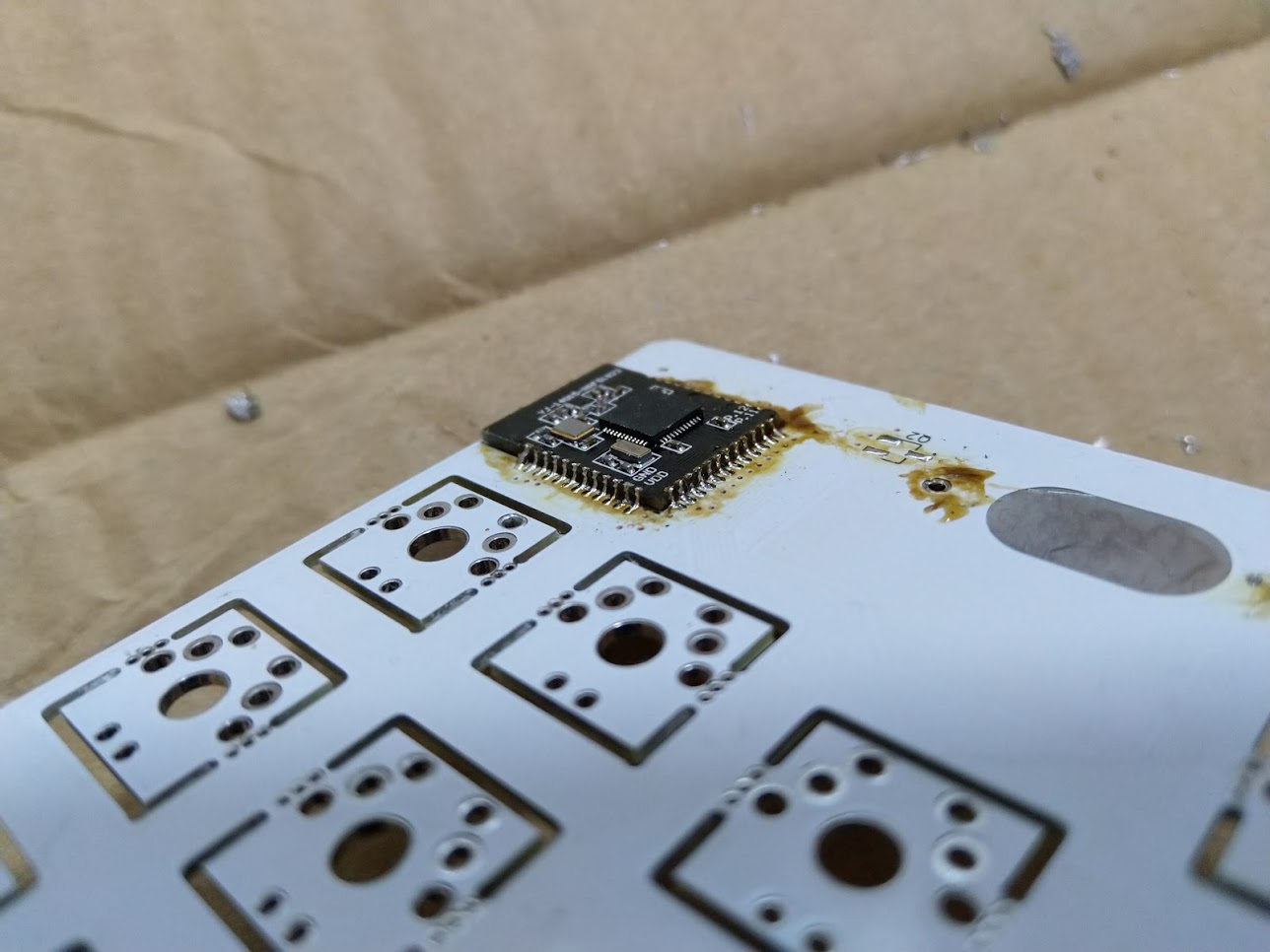That is exactly how I have the FET soldered, so I am not sure what is causing your issue. You can try desoldering the FET and bridging the bottom left (source) and right (drain) pad - here is the pinout. This should bypass the reverse polarity protection and allow you to power the module directly. Make sure you only apply the 3.3V.
You can also try some continuity checking. In a reverse polarity protection circuit with an n-channel FET, the negative of the battery should be connected to the drain, the ground of the circuit (GND pin on module) should be connected to the source and the gate should be connected to both the positive terminal of the battery and the VCC pin on the module.


CONTENT WARNING: copious amounts of rosin in pics below First of all, thanks for making this keyboard available. It's been an amazing, albeit very long journey getting all parts and fitting everything together.
However I got stuck trying to program the keyboard PCBs. Whenever I try to connect my ST-Link V2 to the header, it just shuts off as if it had come across a short or something.
Now I have practically no knowledge of electronics, but I have tested for shorts between all the header pins and there isn't one. I then tried to test for continuity between header ground and Yj-14015 module ground, I got some voltage drop, but still continuity. I suspect the voltage drop is due to the transistor and is normal.
Speaking of, you moved the FET slightly as opposed to Mitosis, which raises my doubts about whether I soldered it on the right side. Could you check my photos? Could you please also check for anything I might've missed that could cause my programmer to freak out?
All photos are of the to-be right half of the keyboard:


For right angle headers I instead used straight headers and connected them via a solder bridge